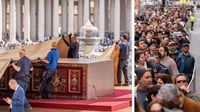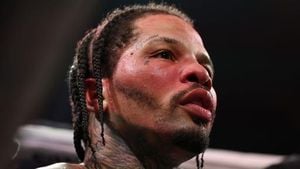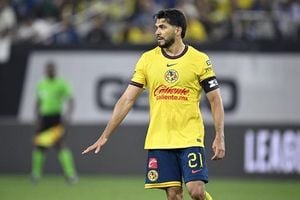As the world turns its eyes toward the Vatican, 133 Cardinals are preparing to enter the Sistine Chapel for the highly anticipated Conclave, set to begin on May 7, 2025. This gathering follows a global appeal for peace issued by the Cardinals just before the Papal election, reflecting a strong desire for resolution in ongoing conflicts.
Gathered in Rome, the Cardinals expressed deep regret over the lack of success in peace efforts in Ukraine, the Middle East, and other troubled regions. In a joint statement, they called upon all parties involved to reach a lasting ceasefire and to negotiate peace without preconditions or further delays. "We urge all involved parties to achieve a lasting ceasefire as soon as possible and to negotiate the long-awaited peace sought by the entire world," the Cardinals stated.
The Cardinals held their last General Assembly on the morning of May 6, 2025, marking a significant moment before the commencement of the Conclave. The election process will officially begin with a Mass dedicated to the Papal election, where the 133 voting Cardinals will gather in the iconic Sistine Chapel. The first ballot for the new head of the Church is scheduled for the evening of May 7.
This Conclave is particularly notable as it signifies a shift within the Catholic Church, reflecting changes initiated during the papacy of the late Pope Francis. The proportion of European Cardinals has decreased significantly compared to the last Papal election in 2013, highlighting a broader, more global representation within the Church's leadership. In 2025, only 39 percent of the Papal candidates come from Europe, a sharp decline from 52 percent a decade ago.
Among the candidates, Cardinal Luis Antonio Tagle from the Philippines is emerging as a strong favorite. At 67 years old, he is seen as a proponent of the progressive agenda championed by Pope Francis, who passed away at the age of 88. Tagle's candidacy represents a potential continuation of the direction set by his predecessor. The diversity among the candidates is noteworthy, with 20 percent hailing from the Asia-Pacific region, 16 percent from Central and South America, 13 percent from Africa, and 12 percent from North America.
Italy remains a significant player in the Conclave, fielding 17 Cardinals, although this number has decreased from 28 in 2013. Cardinal Pietro Parolin, 70, is regarded as a leading contender and is well-respected for his experience as the Vatican's Secretary of State since 2013. His diplomatic skills could be crucial in navigating the Church's future challenges.
Germany is also represented in the upcoming election with three Cardinals: Reinhard Marx, 71; Gerhard Ludwig Müller, 77; and Rainer Maria Woelki, 68. However, the Catholic Church in Germany has faced significant challenges, with over half a million believers leaving the Church in 2022, followed by more than 400,000 in 2023. This trend raises questions about the future influence of German clergy within the Vatican.
As the Cardinals prepare for the election, 100 individuals supporting the Conclave organizationally have pledged to maintain strict confidentiality. This oath was taken in the Pauline Chapel in the Apostolic Palace, emphasizing the importance of secrecy during the election process. Those swearing the oath include the Secretary of the College of Cardinals, the Papal Master of Ceremonies, religious figures, medical staff, and even elevator operators and cleaning staff. Violating this oath could result in excommunication, the highest ecclesiastical penalty.
When the Cardinals enter the Sistine Chapel on May 7, they too will be required to swear an oath of secrecy, underscoring the gravity of their task. The anticipation surrounding this Conclave is palpable, as it will not only determine the next Pope but also set the course for the Catholic Church in a rapidly changing world.
With the eyes of millions upon them, the Cardinals are not just choosing a new leader; they are also responding to a call for peace and unity in a time of division. The outcome of this election could shape the Church's role in global issues and its approach to internal reforms.
As the Conclave approaches, the world watches closely, hoping for a leader who will guide the Catholic Church through its current challenges and into a more hopeful future.





